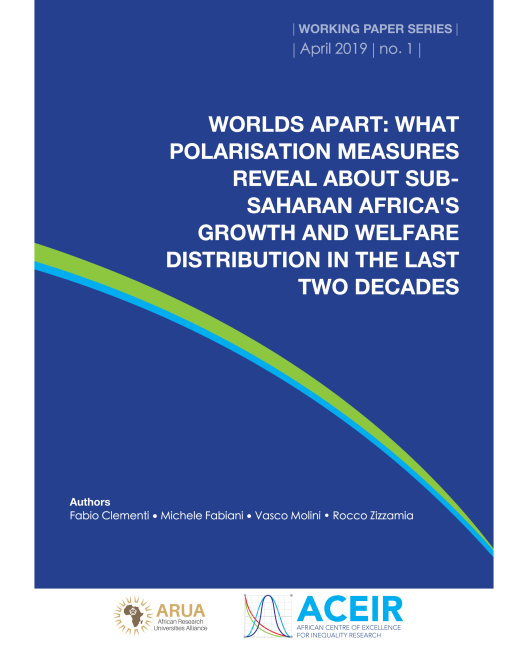Worlds apart: What polarisation measures reveal about sub-Saharan Africa’s growth and welfare distribution in the last two decades
Fabio Clementi, Michele Fabiani, Vasco Molini, Rocco Zizzamia
ACEIR Working Paper no. 1, 2019

Sub-Saharan Africa’s (SSA) development path over the past two decades has been characterised by sluggish poverty reduction occurring alongside robust economic growth. While in this context we would expect inequality to increase, standard synthetic measures provide little evidence of a generalisable uptick in inequality over this period. The authors argue that the standard empirical toolkit available to development economists working on SSA has limited the ability to understand the role that distributional change plays in the persistence and reproduction of poverty on the continent. For this reason, they propose that supplementing inequality measures with the analysis of polarisation provides a cleaner distributional lens through which to make sense of SSA’s poverty performance during this period of growth. Applying polarisation measures to comparable survey data from 24 SSA countries, the authors find that there has been a generalisable increase in polarisation over the past two decades – and in particular, an increased concentration of households in the lower tail of the relative distribution. That this inegalitarian trend is overlooked when using standard synthetic inequality measures confirms the authors' hypothesis that the current toolkit represents a technical bottleneck to understanding the effects of distributional trends on poverty reduction in sub-Saharan Africa – and that polarisation analysis may help overcome this. Read more
